


2020 B3 Sedan (G20)
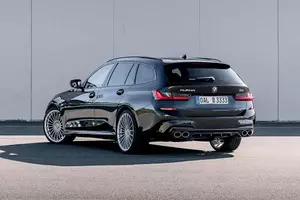
2020 B3 Touring (G21)

2015 B3 Touring (F31 LCI, Facelift 2015)

2015 B3 (F30 LCI, Facelift 2015)
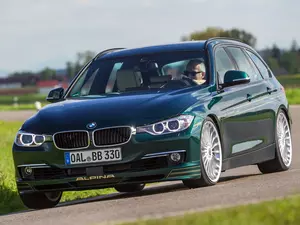
2013 B3 Touring (F31)

2013 B3 (F30)
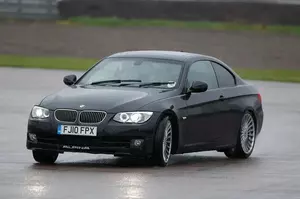
2007 B3 Coupe (E92)
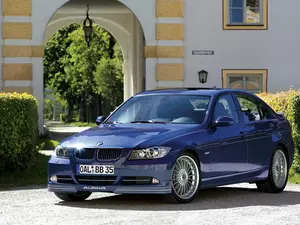
2007 B3 (E90)
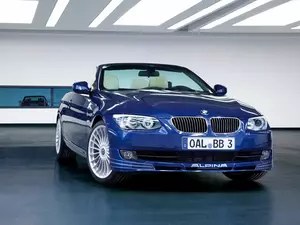
2007 B3 Cabrio (E93)
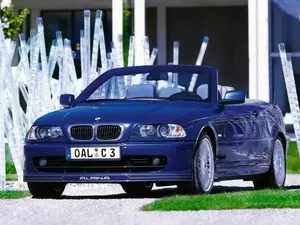
2000 B3 Cabrio (E46)

1999 B3 Coupe (E46)

1999 B3 (E46)
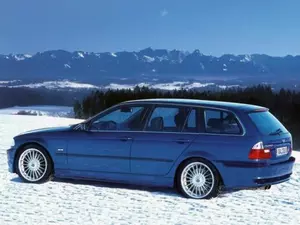
1999 B3 Touring (E46)

1993 B3 (E36)
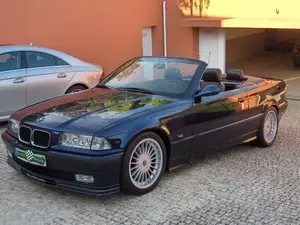
1993 B3 Cabrio (E36)
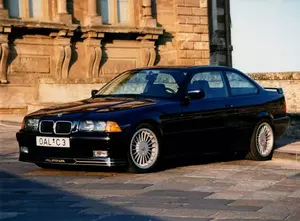
1993 B3 Coupe (E36)

| Vehicle | Precise engine size | Difference from world average | Engine size to consumption ratio | Horsepower from 1 L | Engine size to 100 kg of weight |
|---|---|---|---|---|---|
| 3.0 |
2.99 L (2993 cc) |
27.6% bigger | 125 cc to 1 mpg | 155 hp from 1 L | 166 cc to 100 kg |
| Vehicle | 3.0 |
|---|---|
| Precise engine size | 2.99 L (2993 cc) |
| Difference from world average | 27.6 bigger |
| Engine size to consumption ratio | 125 cc to 1 mpg |
| Horsepower from 1 L | 155 hp from 1 L |
| Engine size to 100 kg of weight | 166 cc to 100 kg |

| Vehicle | Precise engine size | Difference from world average | Engine size to consumption ratio | Horsepower from 1 L | Engine size to 100 kg of weight |
|---|---|---|---|---|---|
| 3.0 |
2.99 L (2993 cc) |
27.6% bigger | 125 cc to 1 mpg | 155 hp from 1 L | 158 cc to 100 kg |
| Vehicle | 3.0 |
|---|---|
| Precise engine size | 2.99 L (2993 cc) |
| Difference from world average | 27.6 bigger |
| Engine size to consumption ratio | 125 cc to 1 mpg |
| Horsepower from 1 L | 155 hp from 1 L |
| Engine size to 100 kg of weight | 158 cc to 100 kg |

| Vehicle | Precise engine size | Difference from world average | Engine size to consumption ratio | Horsepower from 1 L | Engine size to 100 kg of weight |
|---|---|---|---|---|---|
| 3.0 |
2.98 L (2979 cc) |
27% bigger | 103 cc to 1 mpg | 138 hp from 1 L | 166 cc to 100 kg |
| S 3.0 |
2.98 L (2979 cc) |
27% bigger | 103 cc to 1 mpg | 148 hp from 1 L | 175 cc to 100 kg |
| Vehicle | 3.0 |
|---|---|
| Precise engine size | 2.98 L (2979 cc) |
| Difference from world average | 27 bigger |
| Engine size to consumption ratio | 103 cc to 1 mpg |
| Horsepower from 1 L | 138 hp from 1 L |
| Engine size to 100 kg of weight | 166 cc to 100 kg |
| Vehicle | S 3.0 |
| Precise engine size | 2.98 L (2979 cc) |
| Difference from world average | 27 bigger |
| Engine size to consumption ratio | 103 cc to 1 mpg |
| Horsepower from 1 L | 148 hp from 1 L |
| Engine size to 100 kg of weight | 175 cc to 100 kg |

| Vehicle | Precise engine size | Difference from world average | Engine size to consumption ratio | Horsepower from 1 L | Engine size to 100 kg of weight |
|---|---|---|---|---|---|
| 3.0 |
2.98 L (2979 cc) |
27% bigger | 99 cc to 1 mpg | 138 hp from 1 L | 175 cc to 100 kg |
| S 3.0 |
2.98 L (2979 cc) |
27% bigger | 99 cc to 1 mpg | 148 hp from 1 L | 186 cc to 100 kg |
| Vehicle | 3.0 |
|---|---|
| Precise engine size | 2.98 L (2979 cc) |
| Difference from world average | 27 bigger |
| Engine size to consumption ratio | 99 cc to 1 mpg |
| Horsepower from 1 L | 138 hp from 1 L |
| Engine size to 100 kg of weight | 175 cc to 100 kg |
| Vehicle | S 3.0 |
| Precise engine size | 2.98 L (2979 cc) |
| Difference from world average | 27 bigger |
| Engine size to consumption ratio | 99 cc to 1 mpg |
| Horsepower from 1 L | 148 hp from 1 L |
| Engine size to 100 kg of weight | 186 cc to 100 kg |

| Vehicle | Precise engine size | Difference from world average | Engine size to consumption ratio | Horsepower from 1 L | Engine size to 100 kg of weight |
|---|---|---|---|---|---|
| 3.0 |
2.98 L (2979 cc) |
27% bigger | 96 cc to 1 mpg | 138 hp from 1 L | 175 cc to 100 kg |
| Vehicle | 3.0 |
|---|---|
| Precise engine size | 2.98 L (2979 cc) |
| Difference from world average | 27 bigger |
| Engine size to consumption ratio | 96 cc to 1 mpg |
| Horsepower from 1 L | 138 hp from 1 L |
| Engine size to 100 kg of weight | 175 cc to 100 kg |

| Vehicle | Precise engine size | Difference from world average | Engine size to consumption ratio | Horsepower from 1 L | Engine size to 100 kg of weight |
|---|---|---|---|---|---|
| 3.0 |
2.98 L (2979 cc) |
27% bigger | 96 cc to 1 mpg | 138 hp from 1 L | 186 cc to 100 kg |
| Vehicle | 3.0 |
|---|---|
| Precise engine size | 2.98 L (2979 cc) |
| Difference from world average | 27 bigger |
| Engine size to consumption ratio | 96 cc to 1 mpg |
| Horsepower from 1 L | 138 hp from 1 L |
| Engine size to 100 kg of weight | 186 cc to 100 kg |

| Vehicle | Precise engine size | Difference from world average | Engine size to consumption ratio | Horsepower from 1 L | Engine size to 100 kg of weight |
|---|---|---|---|---|---|
| 3.0i Biturbo |
2.98 L (2979 cc) |
27% bigger | 130 cc to 1 mpg | 121 hp from 1 L | - |
| 3.0 |
2.98 L (2979 cc) |
27% bigger | 124 cc to 1 mpg | 137 hp from 1 L | 199 cc to 100 kg |
| Vehicle | 3.0i Biturbo |
|---|---|
| Precise engine size | 2.98 L (2979 cc) |
| Difference from world average | 27 bigger |
| Engine size to consumption ratio | 130 cc to 1 mpg |
| Horsepower from 1 L | 121 hp from 1 L |
| Engine size to 100 kg of weight | - |
| Vehicle | 3.0 |
| Precise engine size | 2.98 L (2979 cc) |
| Difference from world average | 27 bigger |
| Engine size to consumption ratio | 124 cc to 1 mpg |
| Horsepower from 1 L | 137 hp from 1 L |
| Engine size to 100 kg of weight | 199 cc to 100 kg |

| Vehicle | Precise engine size | Difference from world average | Engine size to consumption ratio | Horsepower from 1 L | Engine size to 100 kg of weight |
|---|---|---|---|---|---|
| 3.0i Biturbo |
2.98 L (2979 cc) |
27% bigger | 124 cc to 1 mpg | 121 hp from 1 L | 186 cc to 100 kg |
| Vehicle | 3.0i Biturbo |
|---|---|
| Precise engine size | 2.98 L (2979 cc) |
| Difference from world average | 27 bigger |
| Engine size to consumption ratio | 124 cc to 1 mpg |
| Horsepower from 1 L | 121 hp from 1 L |
| Engine size to 100 kg of weight | 186 cc to 100 kg |

| Vehicle | Precise engine size | Difference from world average | Engine size to consumption ratio | Horsepower from 1 L | Engine size to 100 kg of weight |
|---|---|---|---|---|---|
| 3.0i Biturbo |
2.98 L (2979 cc) |
27% bigger | 124 cc to 1 mpg | 121 hp from 1 L | 166 cc to 100 kg |
| Vehicle | 3.0i Biturbo |
|---|---|
| Precise engine size | 2.98 L (2979 cc) |
| Difference from world average | 27 bigger |
| Engine size to consumption ratio | 124 cc to 1 mpg |
| Horsepower from 1 L | 121 hp from 1 L |
| Engine size to 100 kg of weight | 166 cc to 100 kg |

| Vehicle | Precise engine size | Difference from world average | Engine size to consumption ratio | Horsepower from 1 L | Engine size to 100 kg of weight |
|---|---|---|---|---|---|
| 3.3 i 24V B3S |
3.35 L (3346 cc) |
42.6% bigger | 159 cc to 1 mpg | 91 hp from 1 L | 209 cc to 100 kg |
| 3.3 i 24V |
3.3 L (3300 cc) |
40.7% bigger | 157 cc to 1 mpg | 85 hp from 1 L | 206 cc to 100 kg |
| Vehicle | 3.3 i 24V B3S |
|---|---|
| Precise engine size | 3.35 L (3346 cc) |
| Difference from world average | 42.6 bigger |
| Engine size to consumption ratio | 159 cc to 1 mpg |
| Horsepower from 1 L | 91 hp from 1 L |
| Engine size to 100 kg of weight | 209 cc to 100 kg |
| Vehicle | 3.3 i 24V |
| Precise engine size | 3.3 L (3300 cc) |
| Difference from world average | 40.7 bigger |
| Engine size to consumption ratio | 157 cc to 1 mpg |
| Horsepower from 1 L | 85 hp from 1 L |
| Engine size to 100 kg of weight | 206 cc to 100 kg |

| Vehicle | Precise engine size | Difference from world average | Engine size to consumption ratio | Horsepower from 1 L | Engine size to 100 kg of weight |
|---|---|---|---|---|---|
| 3.3 i 24V |
3.3 L (3300 cc) |
40.7% bigger | 150 cc to 1 mpg | 85 hp from 1 L | 220 cc to 100 kg |
| 3.3 i 24V B3S |
3.35 L (3346 cc) |
42.6% bigger | 152 cc to 1 mpg | 91 hp from 1 L | 209 cc to 100 kg |
| Vehicle | 3.3 i 24V |
|---|---|
| Precise engine size | 3.3 L (3300 cc) |
| Difference from world average | 40.7 bigger |
| Engine size to consumption ratio | 150 cc to 1 mpg |
| Horsepower from 1 L | 85 hp from 1 L |
| Engine size to 100 kg of weight | 220 cc to 100 kg |
| Vehicle | 3.3 i 24V B3S |
| Precise engine size | 3.35 L (3346 cc) |
| Difference from world average | 42.6 bigger |
| Engine size to consumption ratio | 152 cc to 1 mpg |
| Horsepower from 1 L | 91 hp from 1 L |
| Engine size to 100 kg of weight | 209 cc to 100 kg |

| Vehicle | Precise engine size | Difference from world average | Engine size to consumption ratio | Horsepower from 1 L | Engine size to 100 kg of weight |
|---|---|---|---|---|---|
| 3.3 i 24V |
3.3 L (3300 cc) |
40.7% bigger | 150 cc to 1 mpg | 85 hp from 1 L | 220 cc to 100 kg |
| 3.3 i 24V B3S |
3.35 L (3346 cc) |
42.6% bigger | 152 cc to 1 mpg | 91 hp from 1 L | 223 cc to 100 kg |
| 3.3 i 24V Switchtronic Allrad |
3.3 L (3300 cc) |
40.7% bigger | 165 cc to 1 mpg | 85 hp from 1 L | 206 cc to 100 kg |
| Vehicle | 3.3 i 24V |
|---|---|
| Precise engine size | 3.3 L (3300 cc) |
| Difference from world average | 40.7 bigger |
| Engine size to consumption ratio | 150 cc to 1 mpg |
| Horsepower from 1 L | 85 hp from 1 L |
| Engine size to 100 kg of weight | 220 cc to 100 kg |
| Vehicle | 3.3 i 24V B3S |
| Precise engine size | 3.35 L (3346 cc) |
| Difference from world average | 42.6 bigger |
| Engine size to consumption ratio | 152 cc to 1 mpg |
| Horsepower from 1 L | 91 hp from 1 L |
| Engine size to 100 kg of weight | 223 cc to 100 kg |
| Vehicle | 3.3 i 24V Switchtronic Allrad |
| Precise engine size | 3.3 L (3300 cc) |
| Difference from world average | 40.7 bigger |
| Engine size to consumption ratio | 165 cc to 1 mpg |
| Horsepower from 1 L | 85 hp from 1 L |
| Engine size to 100 kg of weight | 206 cc to 100 kg |

| Vehicle | Precise engine size | Difference from world average | Engine size to consumption ratio | Horsepower from 1 L | Engine size to 100 kg of weight |
|---|---|---|---|---|---|
| 3.3 i 24V B3S |
3.35 L (3346 cc) |
42.6% bigger | 167 cc to 1 mpg | 91 hp from 1 L | 223 cc to 100 kg |
| 3.3 i 24V |
3.3 L (3300 cc) |
40.7% bigger | 157 cc to 1 mpg | 85 hp from 1 L | 206 cc to 100 kg |
| 3.3i 24V B3S |
3.35 L (3346 cc) |
42.6% bigger | 159 cc to 1 mpg | 91 hp from 1 L | 223 cc to 100 kg |
| 3.3 i 24V Switchtronic Allrad |
3.3 L (3300 cc) |
40.7% bigger | 165 cc to 1 mpg | 85 hp from 1 L | 206 cc to 100 kg |
| Vehicle | 3.3 i 24V B3S |
|---|---|
| Precise engine size | 3.35 L (3346 cc) |
| Difference from world average | 42.6 bigger |
| Engine size to consumption ratio | 167 cc to 1 mpg |
| Horsepower from 1 L | 91 hp from 1 L |
| Engine size to 100 kg of weight | 223 cc to 100 kg |
| Vehicle | 3.3 i 24V |
| Precise engine size | 3.3 L (3300 cc) |
| Difference from world average | 40.7 bigger |
| Engine size to consumption ratio | 157 cc to 1 mpg |
| Horsepower from 1 L | 85 hp from 1 L |
| Engine size to 100 kg of weight | 206 cc to 100 kg |
| Vehicle | 3.3i 24V B3S |
| Precise engine size | 3.35 L (3346 cc) |
| Difference from world average | 42.6 bigger |
| Engine size to consumption ratio | 159 cc to 1 mpg |
| Horsepower from 1 L | 91 hp from 1 L |
| Engine size to 100 kg of weight | 223 cc to 100 kg |
| Vehicle | 3.3 i 24V Switchtronic Allrad |
| Precise engine size | 3.3 L (3300 cc) |
| Difference from world average | 40.7 bigger |
| Engine size to consumption ratio | 165 cc to 1 mpg |
| Horsepower from 1 L | 85 hp from 1 L |
| Engine size to 100 kg of weight | 206 cc to 100 kg |

| Vehicle | Precise engine size | Difference from world average | Engine size to consumption ratio | Horsepower from 1 L | Engine size to 100 kg of weight |
|---|---|---|---|---|---|
| 3.2 i 24V |
3.15 L (3152 cc) |
34.4% bigger | 126 cc to 1 mpg | 84 hp from 1 L | 242 cc to 100 kg |
| 3.0i 24V |
3 L (2997 cc) |
27.7% bigger | - | 83 hp from 1 L | 231 cc to 100 kg |
| 3.0 i 24V |
3 L (2997 cc) |
27.7% bigger | 120 cc to 1 mpg | 83 hp from 1 L | 231 cc to 100 kg |
| Vehicle | 3.2 i 24V |
|---|---|
| Precise engine size | 3.15 L (3152 cc) |
| Difference from world average | 34.4 bigger |
| Engine size to consumption ratio | 126 cc to 1 mpg |
| Horsepower from 1 L | 84 hp from 1 L |
| Engine size to 100 kg of weight | 242 cc to 100 kg |
| Vehicle | 3.0i 24V |
| Precise engine size | 3 L (2997 cc) |
| Difference from world average | 27.7 bigger |
| Engine size to consumption ratio | - |
| Horsepower from 1 L | 83 hp from 1 L |
| Engine size to 100 kg of weight | 231 cc to 100 kg |
| Vehicle | 3.0 i 24V |
| Precise engine size | 3 L (2997 cc) |
| Difference from world average | 27.7 bigger |
| Engine size to consumption ratio | 120 cc to 1 mpg |
| Horsepower from 1 L | 83 hp from 1 L |
| Engine size to 100 kg of weight | 231 cc to 100 kg |

| Vehicle | Precise engine size | Difference from world average | Engine size to consumption ratio | Horsepower from 1 L | Engine size to 100 kg of weight |
|---|---|---|---|---|---|
| 3.0i 24V |
3 L (2997 cc) |
27.7% bigger | 125 cc to 1 mpg | 83 hp from 1 L | 200 cc to 100 kg |
| Vehicle | 3.0i 24V |
|---|---|
| Precise engine size | 3 L (2997 cc) |
| Difference from world average | 27.7 bigger |
| Engine size to consumption ratio | 125 cc to 1 mpg |
| Horsepower from 1 L | 83 hp from 1 L |
| Engine size to 100 kg of weight | 200 cc to 100 kg |

| Vehicle | Precise engine size | Difference from world average | Engine size to consumption ratio | Horsepower from 1 L | Engine size to 100 kg of weight |
|---|---|---|---|---|---|
| 3.0i 24V |
3 L (2997 cc) |
27.7% bigger | 120 cc to 1 mpg | 83 hp from 1 L | 231 cc to 100 kg |
| Vehicle | 3.0i 24V |
|---|---|
| Precise engine size | 3 L (2997 cc) |
| Difference from world average | 27.7 bigger |
| Engine size to consumption ratio | 120 cc to 1 mpg |
| Horsepower from 1 L | 83 hp from 1 L |
| Engine size to 100 kg of weight | 231 cc to 100 kg |